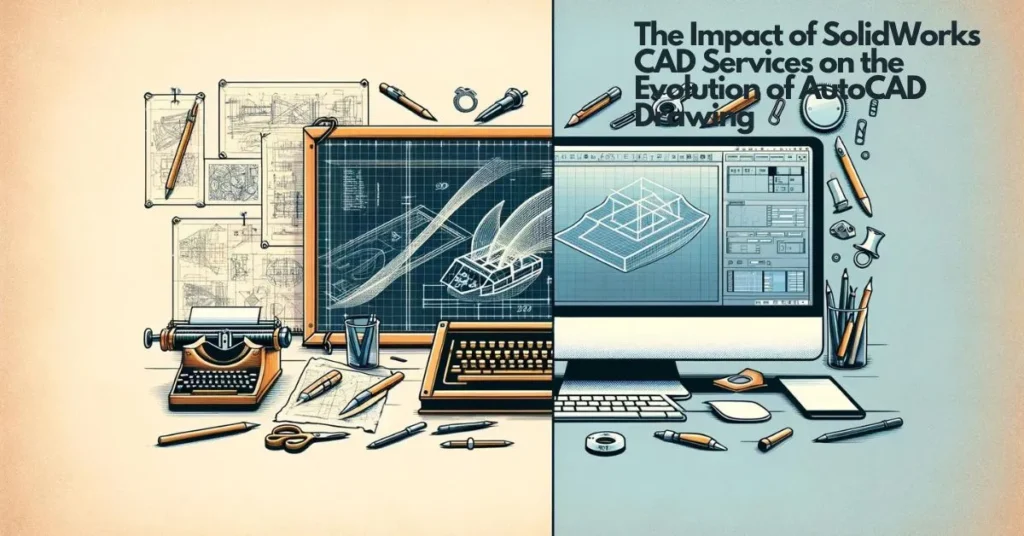The world of design and drafting has undergone countless transformations over the years, with AutoCAD and SolidWorks CAD emerging as game-changing technologies. Before digital designing platforms were launched, manufacturers relied heavily on hand-drawn sketches and drafts. However, the rise of Computer-Aided Design (CAD) software like AutoCAD and SolidWorks has enabled engineers and manufacturers to produce high-quality, precision-based designs with accuracy and speed. This article keenly evaluates the influence of SolidWorks on the evolution of AutoCAD drawing.
Contents
- Solidifying Design with CAD Platforms
- AutoCAD: The Pioneer of Computer-Aided Design
- SolidWorks: Bridging the Gap Between Design and Manufacture
- The Revolutionizing Impact
- Advancement in 3D Modeling
- Enhanced Collaboration
- Increased Efficiency and Productivity
- Going Beyond the Drawing Board – The Rise of SolidWorks
- Integration with Other Engineering Disciplines
- Greater Adoption in the Manufacturing Industry
- Conclusion
Solidifying Design with CAD Platforms
The advent of CAD technology revolutionized design and manufacturing across industries while paving the way for more advanced tools like SolidWorks.
AutoCAD: The Pioneer of Computer-Aided Design
When AutoCAD was launched in 1982, it was one of the first CAD software accessible on personal computers. It became a breakthrough solution for engineers, architects, and designers, providing a digital platform for drafting and designing. AutoCAD’s capabilities soon expanded beyond just 2D drafting to 3D modeling, making it a versatile tool in the industry.
SolidWorks: Bridging the Gap Between Design and Manufacture
A decade later, SolidWorks was introduced to the market, bringing along substantial enhancements to the existing CAD technology. SolidWorks empowered users with robust 3D modeling capabilities and an intuitive user interface, speeding up the design process. Moreover, its offering extended towards simulation, data management, and more, enhancing the productivity of the design and manufacturing processes.
The Revolutionizing Impact
This section explores the influence that SolidWorks services have had on the way AutoCAD conversion services get employed and evolved in CAD drawing.
Advancement in 3D Modeling
SolidWorks’ introduction pushed the possibilities of 3D modeling, leading to the further development of AutoCAD’s 3D capabilities. SolidWorks’ superior 3D modeling encouraged AutoCAD to refine its own functionalities, resulting in a better, faster, and more efficient 3D modeling experience for its users.
Enhanced Collaboration
Before SolidWorks, collaboration on design projects was often challenging. However, SolidWorks introduced collaborative features, stimulating AutoCAD to incorporate similar functionalities, leading to improved collaboration and project coordination between different stakeholders in the design process.
Increased Efficiency and Productivity
SolidWorks’ streamlined process flow has induced AutoCAD to increase its own operational efficiency, making it simpler and faster for designers to transition from idea to implementation.
Going Beyond the Drawing Board – The Rise of SolidWorks
The next phase in the evolution of CAD drawing does not merely rest upon enhancing current technology but also in expanding its usage and versatility. This is where SolidWorks CAD services come into play, paving the way for future growth.
Integration with Other Engineering Disciplines
SolidWorks is not solely a design tool but is essentially an all-inclusive platform that merges multiple engineering aspects like simulation, electrical design, and more.
Greater Adoption in the Manufacturing Industry
Due to its comprehensive approach integrating design with manufacture, SolidWorks services are increasingly being adopted by the manufacturing industry, contributing significantly to the evolution of AutoCAD drawing.
Conclusion
SolidWorks has been instrumental in prompting significant advancements in AutoCAD drawing, thus altering the course of the CAD industry. It has not only sparked competition but also encouraged collaboration, stimulating efficiency and productivity in design processes. The impact of SolidWorks on the evolution of AutoCAD drawing encapsulates the continuous development and adaptation inherent in technology. As CAD services continue to transform in line with industry needs and demands, the role of SolidWorks remains integral to this progress.











